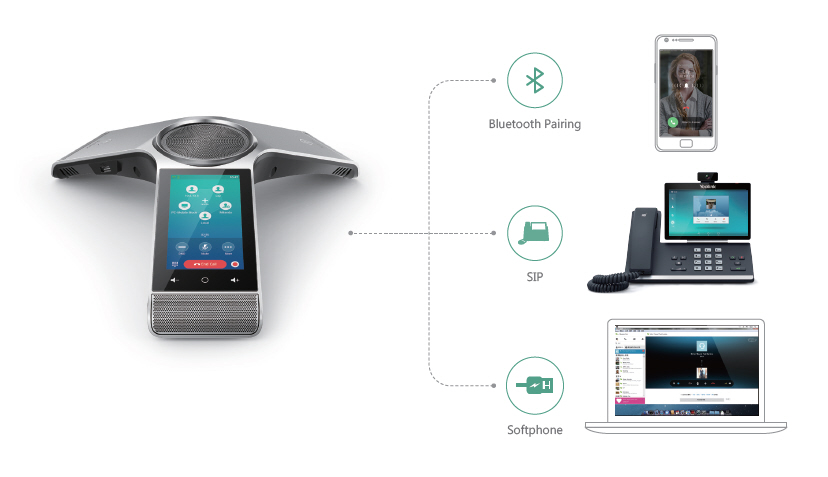In the ever-evolving landscape of business communication, companies are continually seeking methods to enhance efficiency while simultaneously cutting costs. One of the most significant shifts in recent years has been the transition from traditional landline phone systems to Voice over Internet Protocol (VoIP) phone systems. Not only do these new technologies promise substantial cost savings, but they also provide features and functionalities that can significantly improve communication within organizations. In this article, we will delve deep into the various aspects of VoIP phone systems compared to traditional landlines, exploring their advantages, disadvantages, and overall value for companies.
Understanding VoIP Phone Systems
What is a VoIP Phone System?
A VoIP phone system allows users to make voice calls using the internet instead of traditional telephone lines. With VoIP technology, voice data is converted into digital packets and transmitted over the internet. This innovative approach not only reduces costs associated with conventional telephony but also opens up a plethora of features such as video calling, conferencing, and instant messaging.
How Do VoIP Phone Systems Work?
VoIP works by breaking down audio signals into data packets that travel over the internet. These packets are then reassembled on the receiving end, enabling voice communication. The process involves several key components:
- Internet Connection: A stable and high-speed internet connection is essential for effective VoIP functionality. VoIP Phones or Adapters: Users can use specialized VoIP phones or adapters that connect regular phones to the internet. VoIP Service Provider: Companies need to partner with a reputable VoIP service provider to facilitate their communication needs.
Exploring Cost Savings: VoIP Phone Systems vs Traditional Landlines for Companies
When evaluating communication options for businesses, one cannot overlook the financial implications of each choice. The cost savings associated with adopting a VoIP phone system compared to traditional landlines can be staggering.
Initial Setup Costs
- Traditional Landlines: Generally involve installation fees, hardware expenses (such as PBX systems), and ongoing maintenance costs. VoIP Phone Systems: Often require minimal upfront investment if using cloud-based services. Most providers offer subscription models that include hardware leasing at reduced rates.
Monthly Subscription Fees
Traditional landline carriers typically charge monthly fees based on usage and features included in the plan. Conversely:
- VoIP Services: Usually operate on a flat-rate pricing model that covers unlimited calls within certain zones (national or international).
Long-Distance Calling Costs
One major area where businesses see significant savings is in long-distance calling:
- Traditional landline providers often impose hefty charges for long-distance calls. With a VoIP phone system, long-distance calls are often included in your subscription package.
Flexibility and Scalability of Communication Solutions
Adapting to Business Needs
As businesses grow or change direction, their communication needs can shift dramatically:
- Traditional Landlines: Scaling up requires extensive infrastructure changes that can be costly and time-consuming. VoIP Phone Systems: Easily accommodate growth; adding new lines or features is just a matter of a few clicks in most cases.
Remote Work Capabilities
The rise of remote work has changed how we view office communication:
- Traditional systems often struggle with remote connectivity. VoIP models allow employees to connect from anywhere with an internet connection, ensuring seamless collaboration regardless of location.
Feature Comparison: What Can You Expect from Each System?
When it comes to features offered by both systems, there's no contest—the flexibility and variety afforded by VoIP are unmatched.
Basic Features Offered
| Features | Traditional Landlines | VoIP Phone Systems | |------------------------------|-----------------------|-------------------------| | Call Forwarding | Limited | Yes | | Call Waiting | Yes | Yes | | Caller ID | Yes | Yes | | Conference Calling | Limited | Yes | | Video Conferencing | No | Yes |
Advanced Features Available with VoIP
Additionally, numerous advanced features come standard with many VoIP services without extra fees:
Automatic call distribution Interactive voice response (IVR) Call analytics & reporting Integration with CRM toolsQuality of Service and Reliability
Voice Quality Concerns
One common concern regarding transitioning to a new technology is whether it can deliver comparable quality to traditional systems:
- Voice clarity on traditional landlines is generally excellent due to direct wiring. However, advancements in technology have improved VoIP quality significantly; factors like bandwidth management play a crucial role in achieving crystal-clear calls.
Service Reliability Issues
It’s essential for companies to consider potential downtimes when implementing new technologies:
- Traditional landlines are less susceptible to outages during power failures since they operate through physical lines. Conversely, if an organization experiences an internet outage or disruption in service from its provider, it could impact communications significantly.
Security Considerations When Using VoIP Technology
Potential Vulnerabilities in VoIP Systems
With any online technology comes security concerns—voicing worries about hacking or interception is valid but manageable:

Comparative Security Measures for Traditional Lines
While traditional systems may not face cyber threats directly tied to hacking attempts:

Impact on Customer Service Experience Through Communication Technology Choices
Customer Expectations Today
In today's fast-paced world where instant gratification rules supreme, customers expect prompt service regardless of how they reach out—be it through call centers or chat options online:
Quick responses are more achievable via integrated solutions provided by advanced phone systems. Customer relationship management integrations enable better tracking of customer interactions leading to enhanced service delivery.Cost-Benefit Analysis Over Time Between Both Options
To fully understand which option yields more substantial benefits financially over time requires looking beyond initial setup costs—factoring long-term operational expenses proves essential.
Detailed 5-Year Cost Projection Table
Here's an estimated breakdown comparing both options over five years:
| Item | Traditional Landline | VoIP Phone System | |------------------------------|------------------------|-------------------------| | Initial Setup | $5,000 | $1,500 | | Monthly Operating Cost | $300/month | $100/month | | Long Distance Rates | $0.10/minute | Included | | Maintenance Costs | $500/year | Minimal (if https://soundcurve.com/voip-phone-service-encino-ca/ any) |
Estimated total cost for 5 years:
Traditional Landline = $21,000
VoIP System = $7,500
This stark contrast illustrates how transitioning could save companies considerable sums while providing superior functionality!
FAQs About Exploring Cost Savings: VoIP Phone Systems vs Traditional Landlines for Companies
Q1: Are there hidden costs associated with using a VoIP phone system?
Yes! While typically less expensive upfront than traditional lines, there could be additional costs related to premium features or exceeding usage limits on certain plans.
Q2: Can I keep my existing number when switching to a VoIP system?
Absolutely! Most providers allow you to port your existing number seamlessly during setup without interruptions in service.
Q3: Do I need special equipment for using a VoIP system?
You might need either dedicated IP phones or adapters depending on your current setup; however many cloud solutions allow use via standard computers or mobile devices too!
Q4: Will call quality suffer during peak internet usage times?
It depends on your available bandwidth—the better your internet connection stability & speed is maintained throughout peak hours; clear calls should remain uninterrupted!
Q5: Is customer support different between both types?
Generally speaking yes; many modern VOIPs offer 24/7 support via multiple channels compared with fewer hours traditionally limited by older legacy systems!
Q6: How complicated is setup & maintenance post-installation?
VoIPs typically require far less ongoing maintenance than their predecessors; moreover most setups nowadays occur quickly online without needing hardwired installations anymore!

Conclusion
The decision between adopting a VoIP phone system versus sticking with traditional landlines boils down largely toward understanding long-term goals while weighing operational efficiency against overall expenses incurred throughout ownership lifespan itself! Embracing this technological advancement could usher forth significant transformations within company communications bringing alongside undeniable cost-effective solutions allowing organizations greater flexibility moving forward into future endeavors! As we've explored throughout this piece—the advantages offered by deploying such modern solutions far outweigh potential drawbacks making them increasingly appealing choices across industries today!